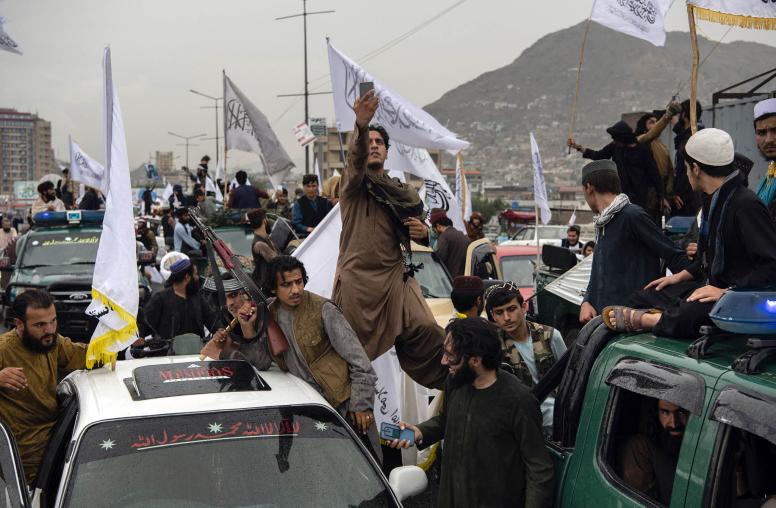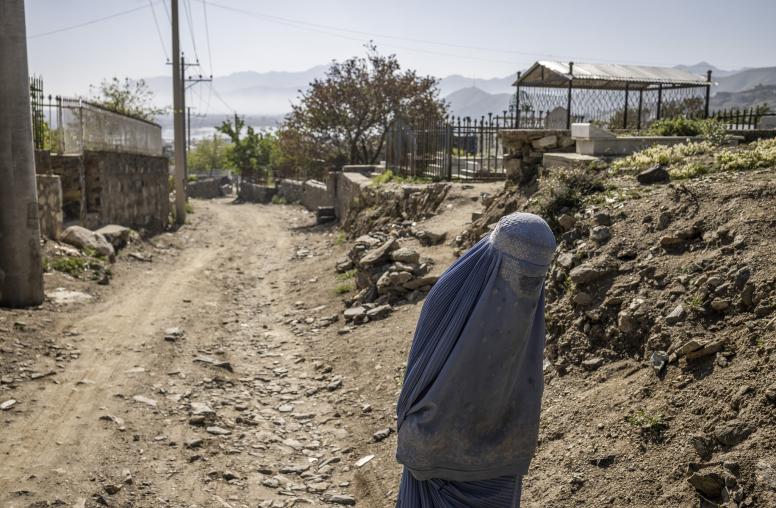How to Build Out President Trump’s Afghan Plan?
USIP Experts: Engaging India in the Right Way Could Help—and Democracy Will Be Vital
President Trump’s blueprint for the U.S. role in Afghanistan broadly resembles that of prior administrations, correcting some previous errors while appearing likely to repeat others, USIP experts told journalists today. While President Trump’s speech lacked details on a strategy, laying out a broad plan will help ease pressure on Afghanistan by removing fears of an early U.S. withdrawal, said Andrew Wilder, USIP’s vice president for Asia programs.

“It’s good to finally have a decision,” Wilder said. “It was a long, drawn-out process, which created a period of ambiguity for many people. And I think it’s good for … our troops and our civilian officials to know what the objective is,” and “for the Afghan public to have the reassurance that the U.S. isn’t sort of abandoning Afghanistan.”
Wilder and other USIP Afghanistan specialists spoke with reporters at a roundtable this morning following President Trump’s Afghanistan announcement last night. Key points in the discussion were these:
The Trump plan broadly maintains the status quo, correcting some mistakes, but not others. The Trump plan “is a very similar overall objective to what President Bush and President Obama articulated … of preventing safe havens” in Afghanistan or neighboring Pakistan for terrorist groups such as the Taliban or ISIS, Wilder noted. A major difference “was the clear articulation of no timelines or timeframes for success, and that success would be conditions-based, which was a significant departure from President Obama’s policy of setting deadlines within which he wanted to withdraw troops,” he said. Also, “a positive was that, actually, there was no mention of troop numbers,” a tactical detail that dominated discussion during the Obama administration, and tended to blur U.S. strategy.
The outlined plan risks repeating a U.S. error of over-emphasizing military action, while failing to build a political strategy to stabilize Afghanistan. “Lip service was paid to an integrated strategy that combines our military, our diplomatic and our economic tools,” Wilder said. “But clearly, the focus of the speech was very much, again, on the military strategy for Afghanistan—that we’re not going to do nation-building, we’re going to kill terrorists, was one of the key lines, I think. And that worries me, because we’ve actually done a lot of killing of terrorists and having a military-led strategy. And I think we don’t have as clearly articulated a political strategy as a military strategy. And one lesson from Iraq and Afghanistan is we’re not going to win this by military means alone. And it would have been, I think, helpful to have more clarity on what the political strategy is.”
Trump’s regional focus, calling on India, may offer an opening for useful diplomacy. “For something that was billed as a regional strategy, there wasn’t that much on exactly how the region would be dealt with,” said Scott Worden, director of USIP’s Afghanistan and Central Asia programs. President Trump’s insistence that Pakistan must stop supporting Taliban forces in Afghanistan was not new. Worden added: “It was interesting and different that President Trump mentioned India explicitly, although the emphasis was more on them providing economic assistance and helping us. It was less about the complicated dynamic—which I think is really one of the root causes of our problem—between Pakistan and India.”
Pakistan and India have fought repeated wars and skirmishes along their disputed border. Pakistan’s security establishment for decades has supported the Taliban to maintain influence over Afghanistan as a defense against being encircled by hostile forces. While President Trump did not address those tensions, his appeal for a greater Indian role “provides an opening” to do so, Worden said. “It will be interesting to see what the State Department and others follow up on with how to bring India in,” Worden said. “If it’s just, ‘India, you need to pay more for the war,’ I doubt they would cooperate very well, but including them in an overall picture is probably helpful if it goes in a diplomatic direction.”
Democracy for Afghanistan is not an American policy goal, but it’s a vital counter-terrorism tool. “The president’s speech stated our goals clearly and narrowly, in terms of protecting the U.S. from terrorism that could emanate from Afghanistan and Pakistan,” said Worden. “That is indeed the end that we’re seeking. The means for getting there does include… a democratic system in Afghanistan, because history has shown that non-democratic systems in Afghanistan over the last 30 years have produced violence that is safe-haven inducing.” An unstable Afghanistan, ruled by battling warlords, has become a host to Al-Qaeda, ISIS and other extremist groups. “So our goal is not to send our forces over to fight for building democracy. However, stable governance and democracy may well be, and I would argue it is, an essential component to achieving … an end to the terrorist threat,” Worden said.



